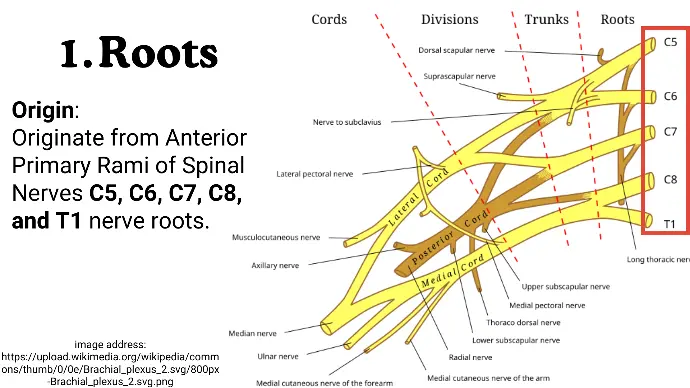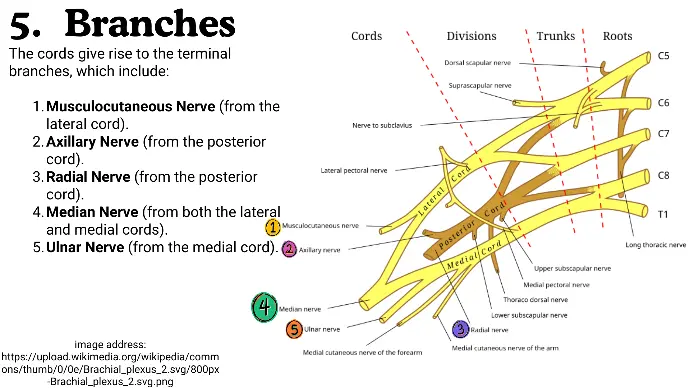Brachial Plexus
The brachial plexus is a network of nerves that originate from the spinal cord and provide motor and sensory innervation to the upper limb.
 This presentation provides an in-depth look at the anatomy, function, clinical relevance, and common pathologies associated with the brachial plexus.
This presentation provides an in-depth look at the anatomy, function, clinical relevance, and common pathologies associated with the brachial plexus.Parts of Brachial Plexus?
The brachial plexus is divided into five parts:
- roots
- trunks
- divisions
- cords
- branches
1. Roots
Origin: Originate from Anterior Primary Rami of Spinal Nerves C5, C6, C7, C8, and T1 nerve roots.

2. Trunks
The Roots from Trunks, as follows.
Upper Trunk: Formed by the union of the C5 and C6 roots.
Middle Trunk: Continuation of the C7 root.
Lower Trunk: Formed by the union of the C8 and T1 roots.

3. Divisions
Each trunk splits into an anterior and a posterior division.
Anterior Divisions: Generally supply flexor muscles.
Posterior Divisions: Generally supply extensor muscles.

4. Cords
Divisions form Cords, as follows.
Lateral Cord: Formed by the anterior divisions of the upper and middle trunks (C5, C6, C7).
Posterior Cord: Formed by all three posterior divisions (C5, C6, C7, C8, T1).
Medial Cord: Formed by the anterior division of the lower trunk (C8, T1).

5. Branches
The cords give rise to the terminal branches, which include:
- Musculocutaneous Nerve (from the lateral cord).
- Axillary Nerve (from the posterior cord).
- Radial Nerve (from the posterior cord).
- Median Nerve (from both the lateral and medial cords).
- Ulnar Nerve (from the medial cord).
